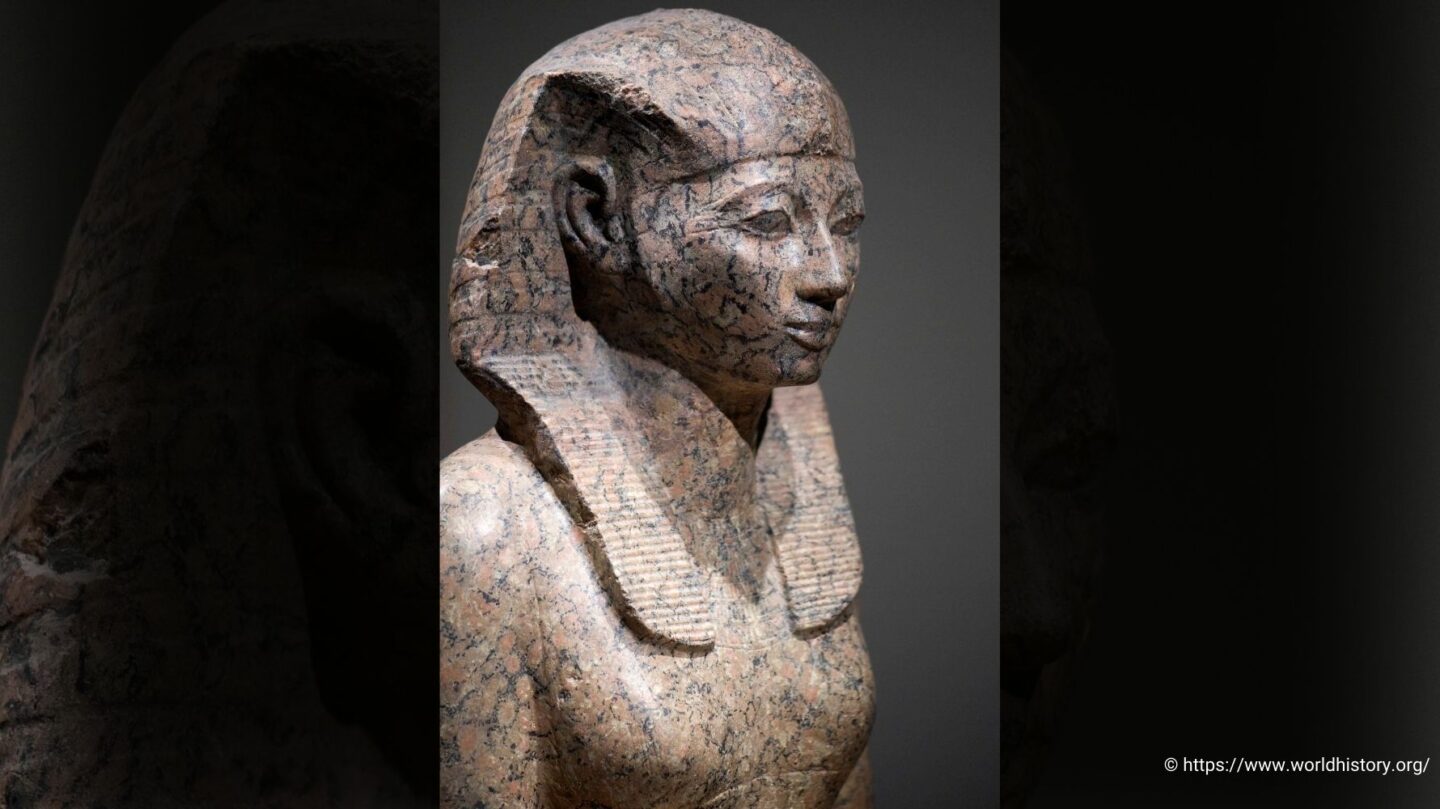Breaking Tradition: A Woman on the Throne
Hatshepsut, one of ancient Egypt’s most remarkable rulers, defied the norms of her time to become the first known female pharaoh. Born around 1507 BCE, she was the daughter of Pharaoh Thutmose I and Queen Ahmose. When her father died, Hatshepsut married her half-brother, Thutmose II, as was customary to preserve royal bloodlines. After his death, the throne technically passed to his young son, Thutmose III, born to a secondary wife. However, Hatshepsut assumed the role of regent and, eventually, declared herself pharaoh.
In a patriarchal society where male rulers were the norm, Hatshepsut took unprecedented steps to legitimize her rule. She adopted the full regalia of a pharaoh, including the false beard and male attire traditionally associated with kingship, presenting herself as Egypt’s rightful ruler.
A Golden Age of Prosperity
Hatshepsut’s reign, which lasted about 22 years (1479–1458 BCE), was marked by peace, prosperity, and monumental achievements. Unlike many pharaohs who focused on military conquests, Hatshepsut prioritized economic growth and cultural development. She revitalized trade networks, most notably organizing an ambitious expedition to the Land of Punt (modern-day Eritrea or Somalia). This voyage brought back valuable goods such as incense, ebony, gold, and exotic animals, enriching Egypt’s economy and solidifying her reputation as a capable and innovative leader.
Under her rule, Egypt experienced a cultural renaissance. Hatshepsut commissioned grand architectural projects, including her magnificent mortuary temple at Deir el-Bahri, which remains one of the most stunning examples of ancient Egyptian architecture. Adorned with detailed reliefs and inscriptions, the temple celebrates her divine birth and achievements, emphasizing her legitimacy as a ruler chosen by the gods.
Rewriting the Rules of Leadership
Hatshepsut’s decision to rule as a pharaoh rather than simply as a regent was revolutionary. She crafted a narrative of divine selection, claiming that the god Amun had decreed her right to rule. To reinforce this claim, she emphasized her connection to her father, Thutmose I, presenting herself as his true heir.
She skillfully navigated the political landscape by maintaining the loyalty of key officials and priests, many of whom had served under her father and husband. Her ability to consolidate power while maintaining stability highlights her political acumen and strategic thinking.
Erased from History
Despite her accomplishments, Hatshepsut’s legacy was almost lost to history. After her death, Thutmose III, her stepson and successor, initiated efforts to erase her from the historical record. Her statues were defaced, her name was removed from monuments, and records of her reign were obscured. Scholars believe this was an attempt to restore traditional male succession and downplay the precedent set by her rule.
It wasn’t until the 19th century that archaeologists uncovered evidence of Hatshepsut’s reign, piecing together the story of her extraordinary life and achievements.
Rediscovering Hatshepsut’s Legacy
Today, Hatshepsut is recognized as one of ancient Egypt’s greatest rulers. Her story challenges traditional narratives about leadership and gender, showcasing her resilience and vision in the face of societal norms. Her contributions to Egypt’s prosperity and culture have left an indelible mark, and her mortuary temple stands as a testament to her enduring legacy.
A Trailblazer in History
Hatshepsut’s life and reign remind us of the power of determination and the ability to break barriers. As the first female pharaoh to rule in her own right, she not only reshaped Egypt’s history but also set a precedent for women in leadership. Her story, once buried in the sands of time, continues to inspire and captivate generations.
